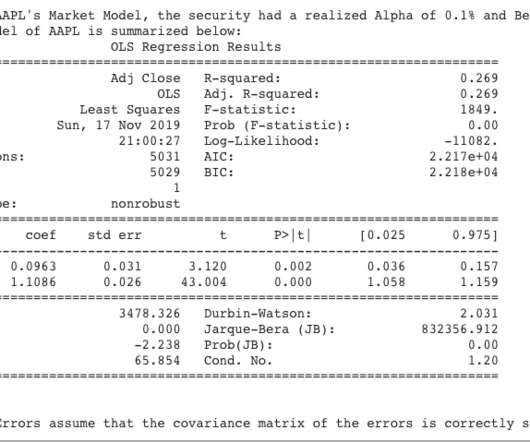Towards optimal experimentation in online systems
The Unofficial Google Data Science Blog
APRIL 23, 2024
Crucially, it takes into account the uncertainty inherent in our experiments. Experiments, Parameters and Models At Youtube, the relationships between system parameters and metrics often seem simple — straight-line models sometimes fit our data well. It is a big picture approach, worthy of your consideration.














Let's personalize your content